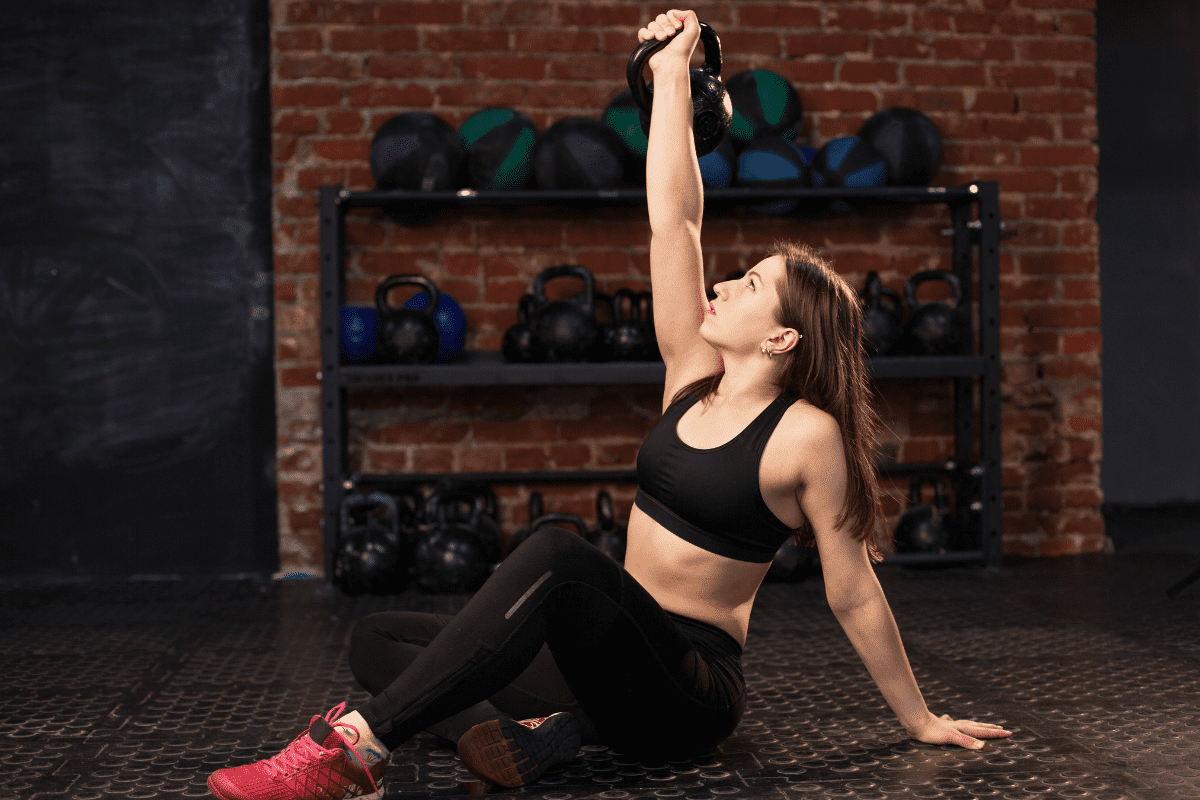7 Turkish Get-Up Alternatives (For Shoulders & Core)
Turkish Get-Ups are an amazingly unique exercise for improving coordination, shoulder stability, core strength and much more. Get-Ups pack a ton of benefits into one movement and they’re a great addition to any training program.
However, sometimes you may need an alternative for Turkish Get-ups.
Maybe you don’t have the necessary equipment or maybe you’re just not able to do them yet.
Whatever the reason, you’re in the right place. I’m about to share with you 7 of my favorite alternative exercises for Turkish Get-Ups.
Alternatives to Turkish Get-Ups
Turkish Get-Ups are such a unique total body movement that it’s almost impossible to come up with any one exercise that is truly like it.
What I’ve done instead is select exercises that incorporate different aspects of the Turkish Get-Up. Exercises that will improve your overhead shoulder stability, shoulder mobility and core strength.
Essentially, exercises that can potentially help you improve your ability to do a Turkish Get-Up better.
Overhead Squat

The first of the Turkish Get Up alternatives is the Overhead Squat.
The Overhead Squat is going to provide a lot of the same benefits as the Turkish Get Up – shoulder stability, shoulder mobility, hip mobility and core strength will all be challenged with this movement.
Step-by-Step Instructions
- Grab a barbell with a snatch-width grip and raise it to full extension overhead.
- Set the feet shoulder-width apart with (optionally) toes pointed slightly out.
- Elevate the bar towards the ceiling and then create tension by ‘pulling the bar apart’.
- Set the eyes straight ahead, inhale and brace the core.
- Initiate the movement by pushing the hips back and then descending into a full squat position.
- Keep the feet flat on the ground, weight distributed through the heels and mid-foot.
- Keep knees pushed out and overtop the shoelaces.
- When you reach the bottom of the squat, push the feet through the floor and drive the hips up.
- Once you’ve completed all reps, drop the bar forward to the floor.
Coaching Points
If you find yourself struggling to keep the bar in the overhead position (it keeps falling forward) when Overhead Squatting, then you probably have a mobility issue in either the shoulders or thoracic (mid to upper back).
Switch to a PVC Pipe (listed as an alternative down below) until your mobility improves.
Situp and Throw
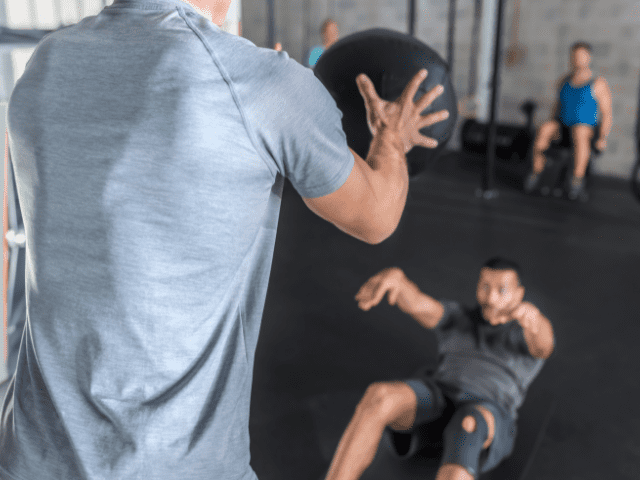
To be able to do Turkish Get-Ups, you need a very strong, powerful core.
Medicine Ball Sit-Up and Throws go beyond just regular crunches and teach you how to use the core functionally, powerfully and with a weighted implement (the medicine ball).
Step-by-Step Instructions
- Find a partner (or wall) and sit down an appropriate distance away*.
- Lay on your back holding the medicine ball overhead on the ground.
- Brace the core, engage the lats, aggressively begin to raise off the ground and throw the ball as hard as possible for distance.
- The follow-through of the throw should bring you to a full situp position.
- Allow your partner to throw the ball back (or retrieve the ball coming back from the wall) and repeat.
Coaching Points
*The distance away from your partner should be far enough that the ball will hit the ground before reaching your partner so they do not have to catch the ball out of the air.
If using a wall, the distance away will be dependent upon the amount of bounce the ball gets off the wall. Find a distance so that you do not need to move between reps.
The biggest mistake I see with athletes trying to learn Situp and Throws involves the timing of the movement.
The throw should initiate the situp, not the other way around. If you try to situp first, the movement will turn into more of a situp followed by a chest pass – not the intention of the movement.
I cue my athletes to just concentrate on the throw. If they throw the ball hard enough the situp will happen naturally.
Hollow Rocks

In addition to being able to use your core powerfully, core stability is an absolute must to properly execute Turkish Get-Ups.
One of the absolute best exercises you can do to learn and improve your core stability, especially from a supine (facing up) position are Hollow Rocks.
And, don’t be fooled, while they may look simple and easy, they are extremely challenging core movements.
How To
- Lay on your back, legs straight and arms extended overhead.
- Brace the core and lift the feet roughly six inches off the ground.
- Now, slowly rock up and down, a few inches in each direction.
- Focus on keeping core tension throughout the movement.
Coaching Points
- You don’t need to go crazy with how much you rock. Keep the rock small and controlled (arms and feet shouldn’t hit the ground) and focus on maintaining core tension.
Single Arm Snatch
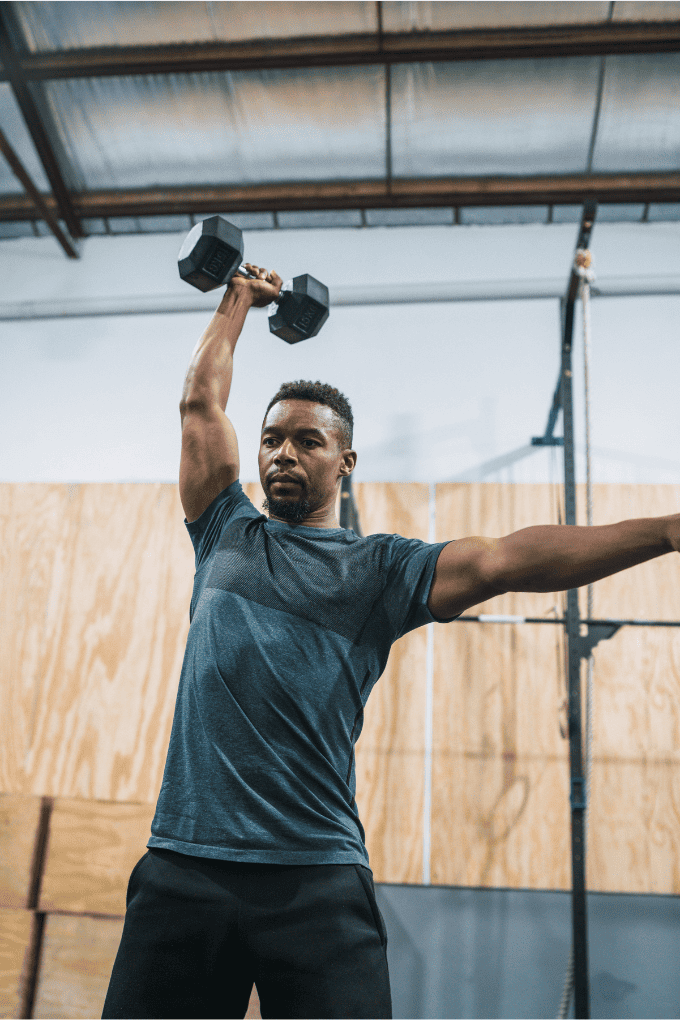
In a way, a Single Arm Dumbbell Snatch is just a simpler, more explosive version of a Turkish Get-Up.
The hip power, single arm strength, stability and coordination and the core stability needed for Single Arm Snatches will all carry over to improving your Turkish Get-Up.
Step-by-Step Instructions
- Grab a dumbbell and stand with feet about shoulder-width apart.
- Put a slight bend in the knee, brace the core and set the back – shoulder blades pulled back, lats engaged, chest out.
- Hinge forward by pushing the hips back and let the dumbbell slide down right in between the knees, coming at a stop just below the knee.
- You are now in the ‘power position’.
- From here, drive the feet through the floor and aggressively extend the hips, driving the shoulders up and slightly back.
- As you reach triple extension of the hips, knees and ankles – use a quick, powerful shrug and allow the elbow to break and begin the pull with the arm.
- Keep the dumbbell close to the body as it travels up.
- Once the dumbbell reaches the highest point of the pull, rotate at the elbow to catch the dumbbell overhead while simultaneously dropping the hips into a quarter squat and shift the feet slightly out.
- Finish the rep by standing tall and lowering the dumbbell down to the shoulder first and then back to the starting position under control.
- Repeat until all reps are completed and then switch arms.
Coaching Points
The two biggest mistakes that I see with Single Arm Snatches are not keeping the dumbbell close to the body on the way up and letting the dumbbell ‘yank’ the shoulder down as it comes back to the starting point.
The dumbbell should travel close to the body all the up until it gets about head height, then rotate the elbow, drop the hips and catch. Don’t allow it to swing forward out away from the body.
The second technique flaw is not staying braced through the return of the dumbbell to the starting position, oftentimes from being in too big of a hurry to knock out reps.
Letting the dumbbell, especially the heavier you get, yank the shoulder down at the bottom of the rep is asking for trouble.
Barbell Overhead Lunge
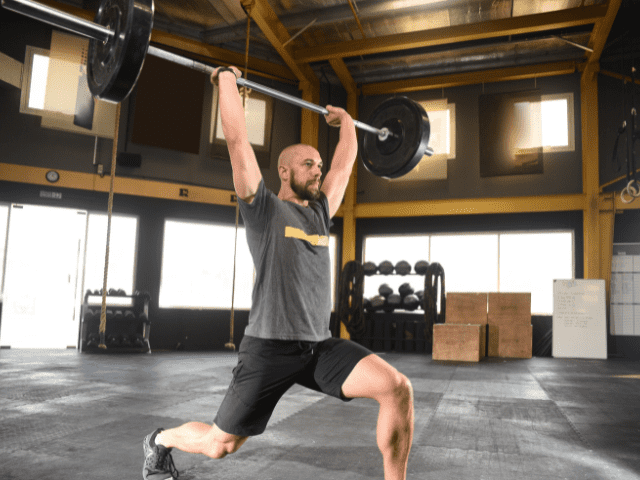
Halfway through a Turkish Get-Up, you’re going to find yourself in a half-kneeling position with a kettlebell over your head.
There are not many exercises that are better suited to improve this aspect of the Turkish Get-Up than the Barbell Overhead Lunge. You’ll improve your single-leg strength, shoulder stability and mobility, and core strength.
Step-by-Step Instructions
- Unrack the barbell similar to how you would unrack a bar for a back squat.
- Step away from the rack to give yourself enough room to perform the movement.
- Slide your hands out and secure a wide grip on the bar. I recommend using a snatch grip width.
- Now press the bar overhead. Use your hips as with a Push Press if necessary.
- Lock the bar in place by elevating the scaps (extending the bar up) and engaging the lats (‘pulling the bar apart’).
- Step backward with one leg, giving yourself enough room to be able to drop into a lunge comfortably without feeling overextended.
- Keep the chest as upright as possible and drop the back knee to roughly one inch from the floor.
- Now drive through the heel and midfoot of the front foot to drive yourself back up tall.
- Repeat on the opposite leg and alternate back and forth until all reps have been completed.
Coaching Points
When doing Overhead Lunges, the narrower your grip on the bar, the more stress you’ll place on your shoulder mobility. If you’re struggling to keep the bar in place overhead – try widening your grip on the bar.
When you step out, make sure to keep the feet shoulder-width apart.
If you’re feeling very off-balance in your lunge there is a good chance that you are stepping the lead foot directly in front of the back foot (essentially placing yourself on a tight rope).
Coach Tip: If you don’t have a barbell, you can absolutely do a Single Arm Overhead Lunge with a dumbbell or kettlebell. In fact, you could make the argument that this variation is even more similar to a Turkish Get-up!
Groiner with T-Spine Rotation
If your (lack of) hip mobility is what is causing you to struggle with your Turkish Get Up, then Groiners with T-Spine Rotation can be a great addition to your training plan.
They’re an excellent movement for both hip mobility and thoracic mobility.
Step-by-Step Instructions
- Begin the movement in a pushup position.
- Keep both hands on the floor and step the right foot up, placing it flat on the ground just outside the pinky finger.
- Sink the backside hip toward the ground to maximize the stretch on the hip flexor.
- After a 1 to 3-second hold, brace on the left hand and rotate open, taking the right hand toward the ceiling.
- Ideally, finish in a position with the eyes and fingertips both aimed straight up.
- Now return back to the starting position and repeat on the opposite side.
- Continue to alternate back and forth until all reps are completed.
Coaching Points
The biggest mistake I see athletes make with Groiners (with or without the rotation) is not bringing the foot up high enough toward the hands.
Depending upon your flexibility, bringing the foot up towards the hands may be relatively easy or seem totally impossible. Challenge yourself to place your foot as close to just outside your hand as possible.
The other issue I see is rushing through them too fast. Take your time on Groiners with T-Spine Rotation. Sink into each stretch and work on opening as much as possible on the rotation. Don’t just check the box.
Bird Dogs
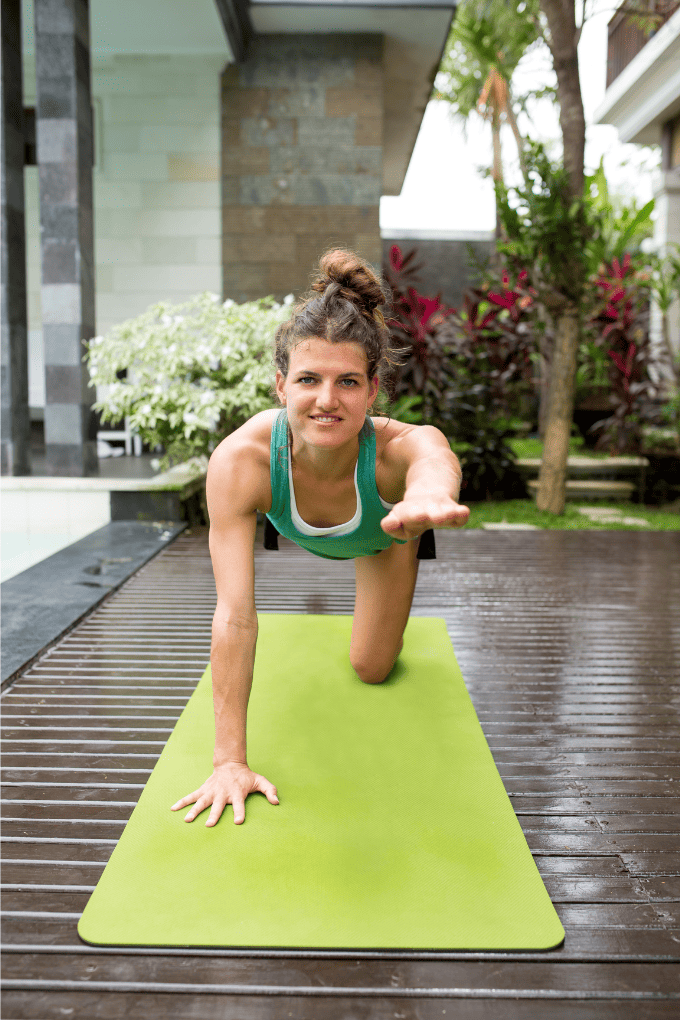
Bird Dogs are another simple exercise that can help improve your thoracic mobility, core strength and glute activation.
It’s also beginner-friendly and doesn’t require any equipment, making it a prime candidate to sneak into your warm-up.
Step-by-Step Instructions
- Start on the ground, on your hands and knees.
- Simultaneously lift one arm and the opposite leg.
- Lift the arm straight out in front of the body, palm down. It should finish parallel to (or slightly higher than) the torso.
- Lift the leg straight out below the body, squeezing the glute at the top. It should finish parallel to (or slightly higher than) the torso.
- There should now be a (relatively) straight line through the ankle, knee, hip, shoulder and hand.
- Reset back to the starting position and then repeat the movement on the other side.
- Continue to alternate back and forth until all reps are completed.
Coaching Points
Keep the eyes focused down (or slightly forward) with the head neutral when doing Bird Dogs. Do not try to look up as this will cause the back to overarch.

Get Shredded… For Free
Get a free workout Monday through Friday, posted right here on Horton Barbell. These workouts are designed to help you get strong, in shape and look great at the beach!
Final Thoughts
Turkish Get-Ups are an amazing exercise with an incredible amount of benefits. They can improve the strength and stability of your rotator cuff muscles, increase your shoulder and hip mobility and develop core strength.
However, I also understand that there are situations where you simply can’t do Get-Ups.
Maybe you don’t have the necessary equipment or maybe you need to improve in some areas before you’re able to do them.
Hopefully, this list of Turkish Get Up alternatives has helped you figure out a different movement that you can use as a substitute.

